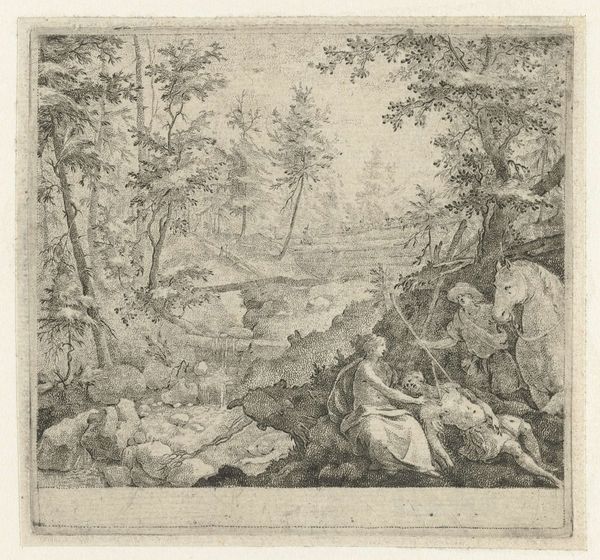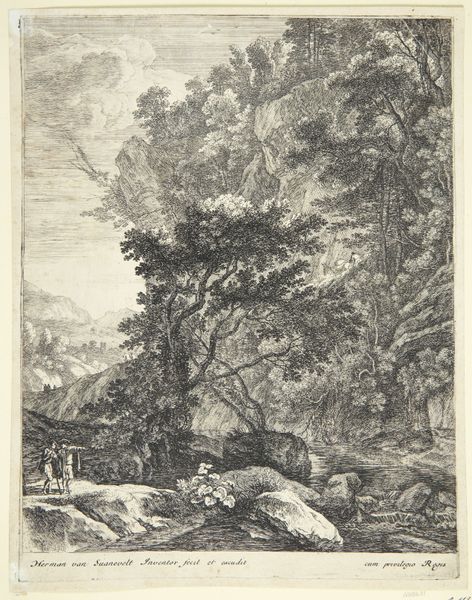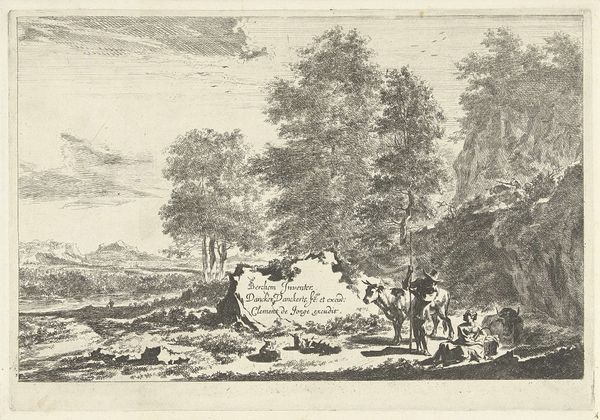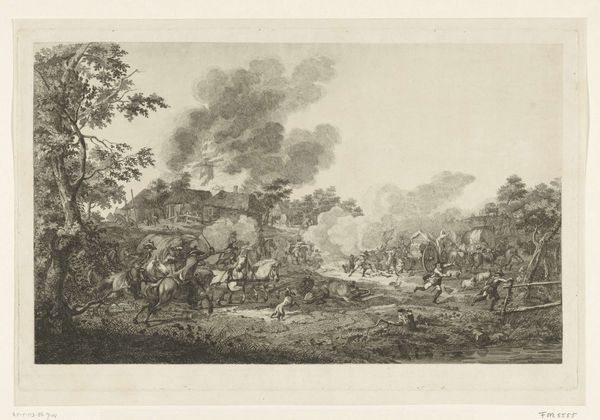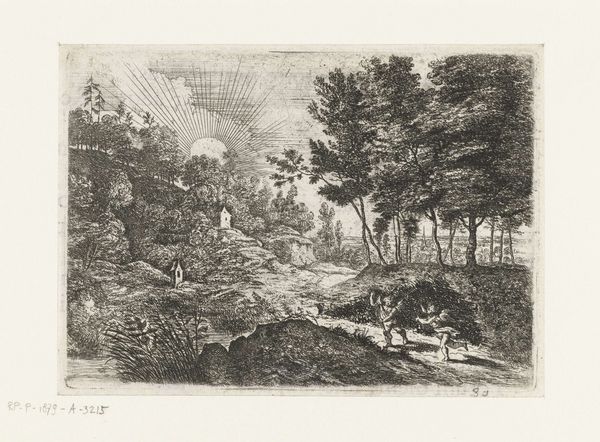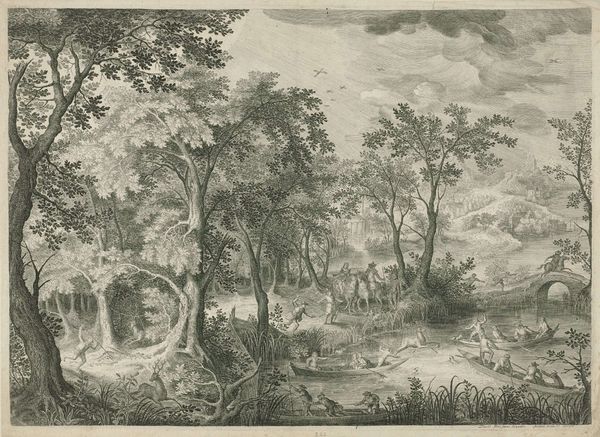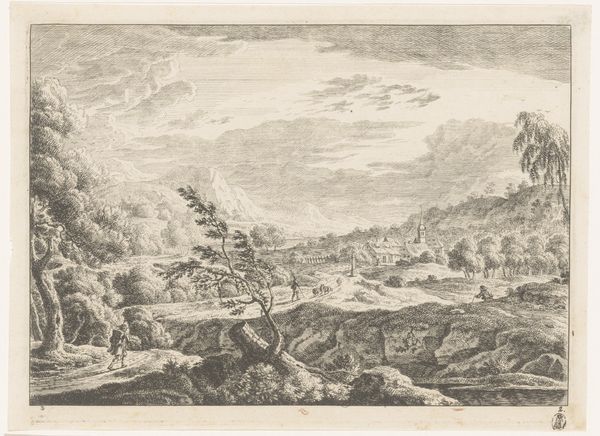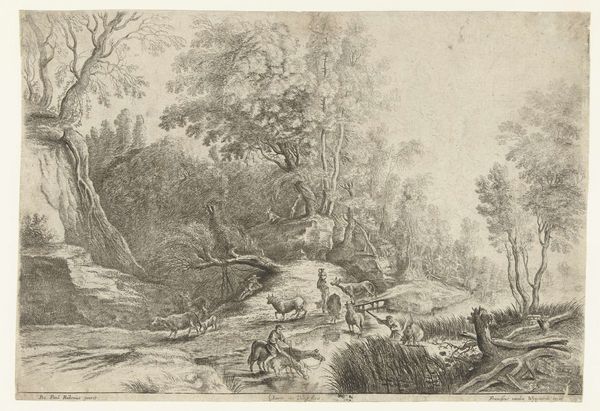
Landschap met twee muilezels voor de Rocca Aquatico bij Ancona 1644 - 1652
0:00
0:00
drawing, print, etching
#
drawing
#
baroque
#
dutch-golden-age
# print
#
etching
#
landscape
#
figuration
#
rock
#
pencil drawing
Dimensions: height 237 mm, width 197 mm
Copyright: Rijks Museum: Open Domain
Curator: Before us is “Landscape with Two Mules before the Rocca Aquatico near Ancona,” an etching by Jan Both, created sometime between 1644 and 1652. It's a view, as the title suggests, of a location in Italy. Editor: It has an almost dreamlike quality, doesn't it? The delicate lines of the etching create this shimmering effect. There's a haziness, as though looking at a memory, and yet the forms are resolutely solid and defined. Curator: That tension between clarity and vagueness is key, I think. The muleteers, their donkeys, become almost allegorical figures within a classical landscape. Jan Both’s frequent use of this type of scene pulls on the tradition of the 'ideal' landscapes. It presents not so much an accurate record, as an emotive stage. Editor: The composition also plays a vital role. See how your eye is led first by the sharp detail of the mules in the foreground, then gently guided through the receding planes, the layering. And how much texture is made with so few precisely placed marks. The line work is simple but dense, with very delicate modeling techniques used throughout. Curator: Mules, as beasts of burden, are quite common, aren't they? The path they traverse symbolizes life’s journey, and these mules carry the weight of expectations, the collective toil of human endeavor, their plodding through history and experience. Consider, too, Ancona, its importance as a port...the coming and going, and exchange, both forced and willing. Editor: The trees, though, particularly the grand tree to the right, I'm drawn to how it seems to balance the weighty rockface across the path, how these strong vertical elements organize the space in the picture. The whole tonal structure relies on this. Curator: Ultimately, it evokes a deep connection to the land and highlights, for me at least, how landscape has become inseparable from cultural consciousness. It reminds us, perhaps, of the journey ahead. Editor: Yes, it does indeed, especially considering the weight of the historical and material forces at play. Thank you for bringing that to light.
Comments
No comments
Be the first to comment and join the conversation on the ultimate creative platform.
